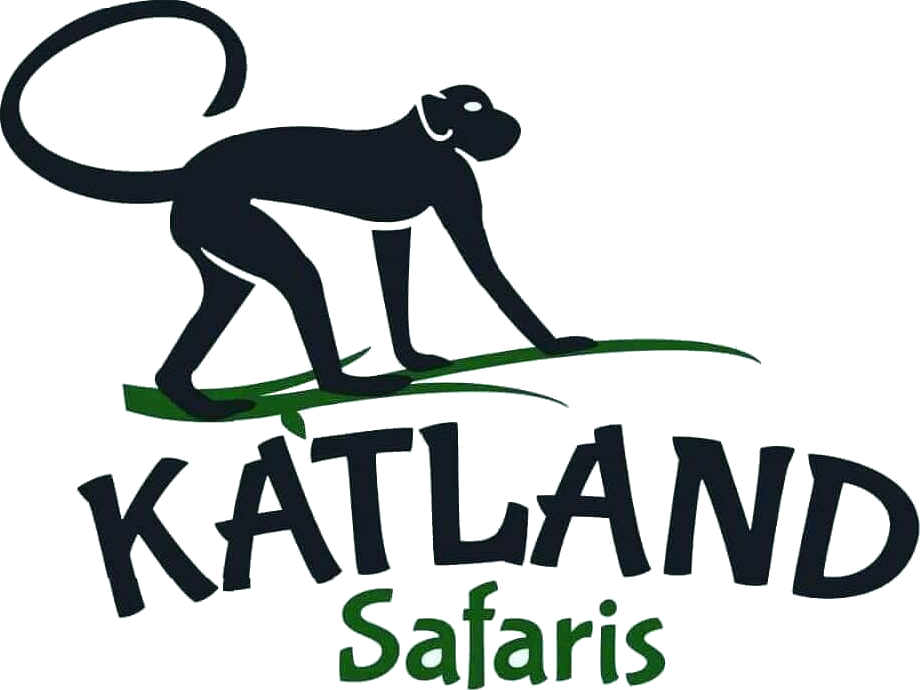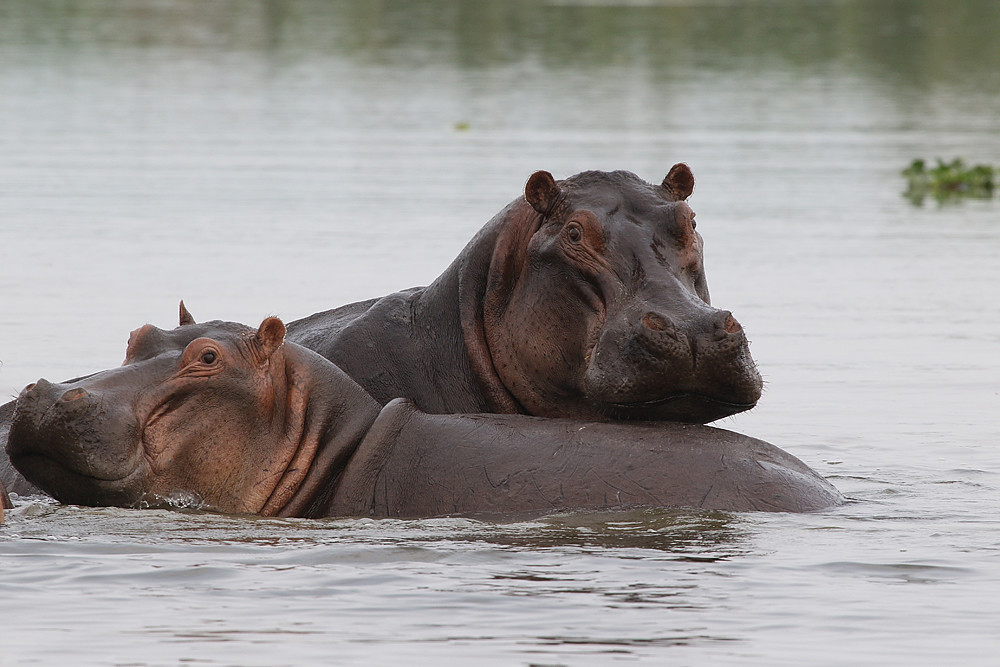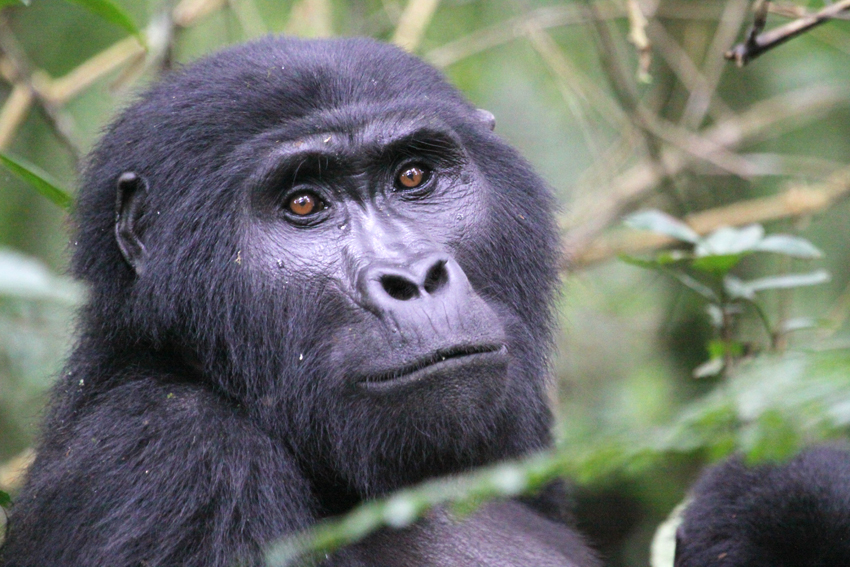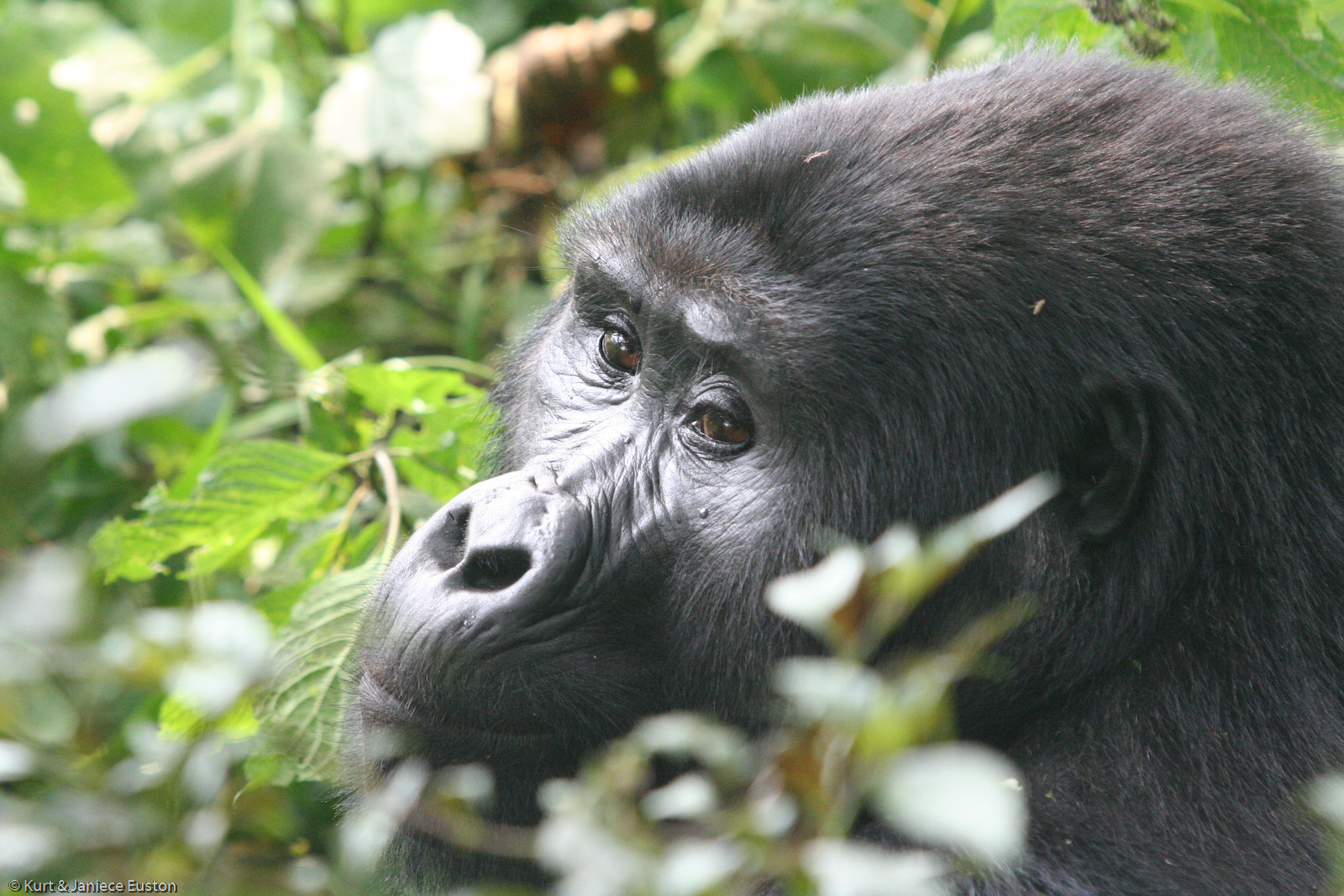The Majestic Hippopotamus
The majestic hippopotamus roams the tranquil, sunlit waters of Africa, a massive creature gliding just below the surface, radiating power and mystery. Weighing up to 4,000 pounds, the hippopotamus is a dominant figure in its environment. Its jaw, capable of smashing watermelons and with teeth that can grow up to 20 inches long, challenges the label of “gentle giant.” Despite their calm appearance, hippos are responsible for more deaths across Africa than any other large animal, including lions and crocodiles.
These extraordinary mammals have special adaptations that help them thrive both in water and on land. Their large mouths are not only for display but are vital for their herbivorous diet, mainly consisting of grass. Hippos live in tight-knit social groups called pods, usually with 10 to 30 members led by a dominant male. They communicate through snorting, grunting, and body language, often submerged, using surprisingly complex behaviors.
As we explore the captivating world of hippos, we will learn about their physical traits, habitats, and the many threats they face. From their impressive size and ability to run at speeds of up to 19 miles per hour on land to their agility in the water, where they move gracefully, hippos often defy expectations. Understanding their lives helps us appreciate their crucial ecological role and emphasizes the importance of their conservation for future generations.
Places to Find Hippos in Uganda
Murchison Falls National Park
Murchison Falls National Park hosts one of Uganda’s largest hippo populations. The scenic Nile River provides an ideal habitat for these semi-aquatic animals. Visitors can enjoy boat safaris to the base of Murchison Falls, where they may see hippos swimming or hear their grunts along the riverbanks. The calm Nile waters often feature hippo pods, offering close-up wildlife viewing opportunities.
Queen Elizabeth National Park
The Kazinga Channel in Queen Elizabeth National Park is famous for one of Africa’s highest concentrations of hippos. This 40-kilometer waterway links Lake George and Lake Edward, creating a refuge for these animals and other wildlife. During boat safaris, visitors can observe hundreds of hippos lounging, sunbathing, and socializing in large groups. The park’s diverse wildlife and stunning scenery make it a top safari destination.
Lake Mburo National Park
Lake Mburo National Park provides a quieter, less crowded setting for travelers eager to see hippos up close. The park’s interconnected lakes are perfect habitats, where guided boat safaris often reveal hippos wallowing in mud or swimming amid abundant birdlife and other species. Its serene landscape makes Lake Mburo ideal for nature enthusiasts.
Semliki Wildlife Reserve | The Majestic Hippopotamus
In western Uganda, the Semliki Wildlife Reserve protects hippos along the Semliki River. Visitors can take boat safaris and guided tours to observe hippos and other wildlife, while learning about local conservation efforts. Its strategic location near the Congo border offers insight into the region’s biodiversity and cultural riches.
Interesting facts about hippos
- Semi-Aquatic Mammals: Hippos are adapted to water with webbed feet and can hold their breath for up to 5 minutes underwater. They stay in rivers and lakes to keep cool and hydrated.
- Large Size: Among the largest land mammals, adult hippos weigh between 1.5 and 4,000 kg (3,300 to 8,800 lb). Despite their bulk, they are excellent swimmers and quick on land.
- Herbivorous Diet: Feeding mainly on grasses, leaves, and aquatic plants, hippos can eat up to 150 pounds of vegetation daily.
- Social Structure: Hippos live in large groups called pods, sometimes with up to 100 members, usually led by a dominant male.
- Territorial Behavior: They are territorial and mark it with dung and urine. They can be aggressive to other hippos and humans if threatened.
- Unique Skin Secretions: Hippos produce a natural sunscreen in their skin secretions, sometimes reddish-pink, which has antiseptic properties.
- Communication: They communicate through sounds like grunts, snorts, and honks, along with body language, to stay in touch within their pod.
- Conservation Status: Classified as vulnerable due to habitat destruction, poaching, and conflicts with humans, requiring ongoing conservation efforts.
Booking gorilla trekking safaris in Uganda and Rwanda with Katland Safaris.
Katland Safaris organizes the best gorilla and wildlife safaris in East Africa. When it comes to gorilla trekking, we will book your gorilla trekking permits for Uganda`s Bwindi and Mgahinga gorilla national park and gorilla permits for Volcanoes National Park in Rwanda. Besides booking your gorilla permit, we will also put all other gorilla safari accessories, like transportation and accommodation, in one package to make your gorilla trekking safari a memorable adventure:
Your gorilla trekking safaris can be customized to meet your safari expectations and needs, and budget. The safari package can range from budget, mid-range, and luxury safaris.
Feel free to contact our team of excellent safari consultants to help you organize the best Africa gorilla safari ever.



